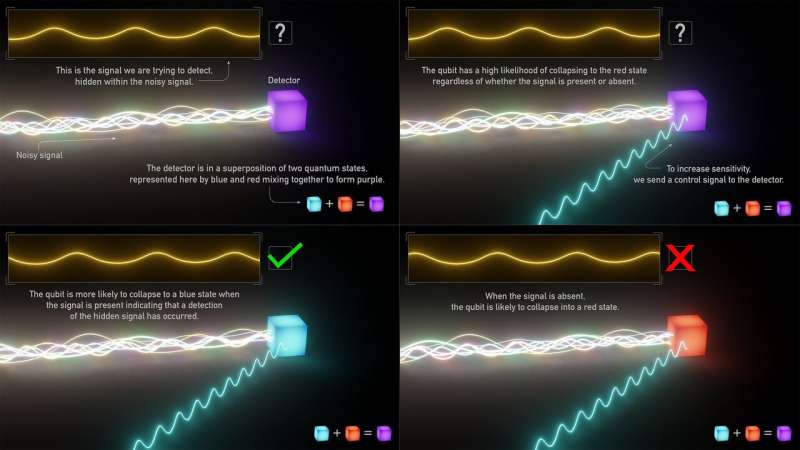Team finds an easier optimal detection scheme for near-term quantum sensors

Quantum holds the promise of increasing the power of sensing technologies. While the field of quantum sensing has shown a lot of potential for detecting very small signals, the ability to truly optimize these sensors has been thwarted by the complexity of control schemes.
In a paper published on March 25 in Nature Partner Journals Quantum Information, a research team based at the Johns Hopkins University Applied Physics Laboratory (APL) in Laurel, Maryland, explained how they applied two theoretical tools of quantum information to these types of extremely sensitive signal detection tasks. Their research suggests that honing this sensitivity to detect signals while rejecting background noise will enable the use of quantum detectors even when this surrounding noise is strong relative to the signal of interest.
"This field has seen a lot of recent interest through theoretical progress and impressive experimental results on a variety of platforms," said Paraj Titum, a quantum scientist in APL's Research and Exploratory Development Department and the lead author of the paper. "Our results are readily implementable in a variety of quantum computing and quantum sensing platforms such as superconducting qubits, NV-diamonds, and Silicon Carbide."
The authors applied filter functions and optimal quantum control theories to a use case of quantum bit (qubit) sensors that mirror a classic problem in signal detection theory: optimal detection of a known signal from background noise with a controllable quantum sensor. The research team obtained analytical insight into the optimal control protocol when the background noise is white.
"This turned out to be the ubiquitous spin-locking control scheme," Titum said. "More generally, we developed a simple numerical technique for arbitrary signal and background noise." This is similar to the well-known matched filtering scheme that is the optimal method to use in classical signal processing.
The APL team already has plans to explore this scheme in detecting realistic signals in an experimental setting. Another promising theoretical path they plan to explore is the use of quantum entanglement to enhance detection likelihood as compared with classical sensors.
More information: Paraj Titum et al, Optimal control for quantum detectors, npj Quantum Information (2021). DOI: 10.1038/s41534-021-00383-5
Provided by Johns Hopkins University



















